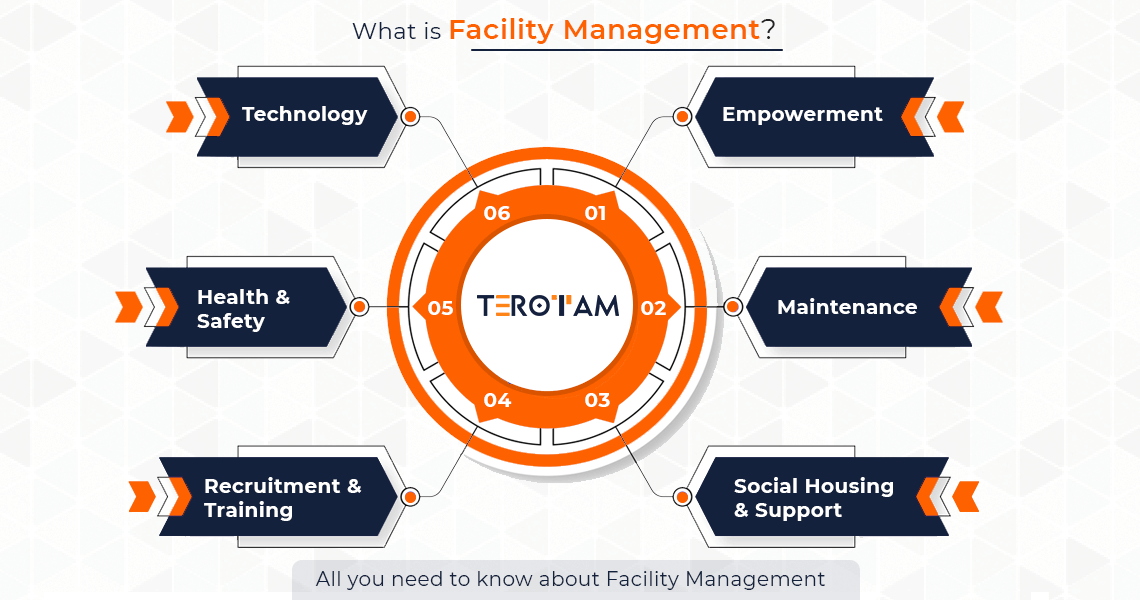Secret Fads Forming the Future of Facility Administration in 2024
As we look in advance to 2024, the landscape of center management is positioned for significant improvement, driven by several vital fads. The combination of smart structure modern technologies and a change towards data-driven decision-making promise to enhance functional efficiency while focusing on sustainability in method.
Smart Building Technologies

Smart structure modern technologies encompass a large selection of systems, consisting of smart lights, HVAC controls, and safety and security systems. By incorporating these systems, center supervisors can monitor and adjust parameters in real-time, causing considerable decreases in power waste and functional expenses. Wise sensing units can find tenancy levels and adjust lighting and temperature level accordingly, ensuring that power is just utilized when required.
In addition, these technologies facilitate boosted information collection, allowing companies to track use patterns and recognize possibilities for more enhancements. The implementation of smart structure modern technologies not only contributes to sustainability goals yet additionally develops healthier job settings that can increase employee productivity and satisfaction.
As we relocate into 2024, the fostering of wise structure innovations will likely speed up, mirroring a wider shift in the direction of more smart, receptive, and sustainable center management techniques.
Data-Driven Decision Making
Progressively, organizations are leveraging data-driven decision making to enhance center management methods. By taking advantage of information analytics, facility supervisors can acquire actionable understandings that substantially improve functional efficiency and resource appropriation. The combination of sophisticated modern technologies, such as IoT sensors and real-time surveillance systems, enables the collection of huge quantities of data on structure performance, occupancy prices, and energy usage.
This wide range of info permits facility managers to determine fads, anticipate upkeep needs, and proactively address problems prior to they escalate. Anticipating analytics can anticipate tools failings, reducing downtime and repair work expenses. Additionally, information visualization devices promote better communication among stakeholders, making sure that informed decisions are made collaboratively.
Additionally, data-driven strategies boost critical preparation by making it possible for center supervisors to assess the effectiveness of current methods and make educated choices concerning investments in technology or facilities. As companies increasingly prioritize operational excellence, data-driven decision production is positioned to end up being a foundation of effective facility management strategies in 2024 and beyond. Inevitably, the capability to utilize data successfully will equip organizations to develop extra effective, efficient, and resilient facilities.
Sustainability and Green Practices
The emphasis on data-driven choice making naturally aligns with the expanding focus on sustainability and green techniques within center administration. As organizations significantly focus on environmental responsibility, center supervisors are leveraging analytics to enhance resource usage, lower waste, and minimize carbon footprints. This tactical technique makes it possible for the combination of energy-efficient systems, such as LED lighting, clever cooling and heating controls, and sustainable power resources into center operations.
Moreover, the execution of sustainable methods extends past energy intake. Facility supervisors are promoting and taking on environmentally friendly products recycling campaigns to produce a round economy within their centers. This not only enhances the ecological profile of the company yet likewise cultivates a society of sustainability among staff members.
Compliance with environmental regulations is an additional essential element driving the adoption of environment-friendly practices. By making use of data analytics, center managers can keep track of conformity metrics and identify areas for improvement, making sure adherence to international and neighborhood sustainability standards.
Crossbreed Work Designs
A substantial change in the direction of crossbreed work versions is reshaping the landscape of center monitoring in 2024. This paradigm integrates in-office and remote work, necessitating a reevaluation of area use, resource appropriation, and employee engagement techniques. Organizations are progressively identifying the relevance of versatile offices that satisfy varied demands and choices.
Facility supervisors must adjust by implementing flexible office layouts that support joint efforts while supplying areas for focused job. This includes the integration of innovation to promote seamless interaction and cooperation among in-office and remote workers. Smart building options, equipped with analytics and sensing units, allow for real-time monitoring of area use, enabling organizations to maximize their atmospheres successfully.
In addition, crossbreed job versions stress the requirement for reliable facility monitoring that focuses on staff member experience. In significance, the crossbreed job version is changing center administration, motivating a positive method to meet the evolving demands of the workforce.
Enhanced Owner Health
As organizations embrace hybrid job designs, an increased focus on occupant health is ending up being essential to facility monitoring methods. Facility Management. This shift recognizes that a pleased and healthy labor force directly impacts performance and retention prices. Facility managers are currently prioritizing settings that promote physical and mental health, integrating components such as natural lighting, biophilic style, and easily accessible wellness sources

Technology plays an important function in this development. Smart building systems can keep track of ecological variables and change setups in real-time, ensuring optimal comfort degrees - Facility Management. Feedback mechanisms, such as tenancy sensing units and worker surveys, allow center supervisors to constantly fine-tune wellness efforts based on resident needs.

Final Thought
In 2024, the future of center management will certainly be significantly influenced by the assimilation of smart building modern technologies and data-driven decision-making, promoting boosted operational effectiveness. Sustainability initiatives will certainly prioritize environment-friendly practices, while Discover More the appearance of hybrid work designs will certainly demand flexible office layouts. Additionally, a heightened concentrate on occupant wellness via advanced cooling and heating systems and biophilic design will certainly add to healthier work settings. These trends collectively emphasize the developing landscape of center monitoring in action to modern challenges and opportunities.
Facility supervisors are embracing green products and advertising recycling efforts to produce a round economic climate within their centers.A significant shift towards hybrid work designs is improving the landscape of facility management in 2024.Furthermore, hybrid work designs stress the requirement for efficient facility management that prioritizes staff member experience.As companies embrace hybrid job click to read more versions, a heightened emphasis on passenger wellness is coming to be important to center administration strategies.In 2024, the future of facility administration will certainly be dramatically influenced by the combination of clever building modern technologies and data-driven decision-making, promoting enhanced operational efficiency.